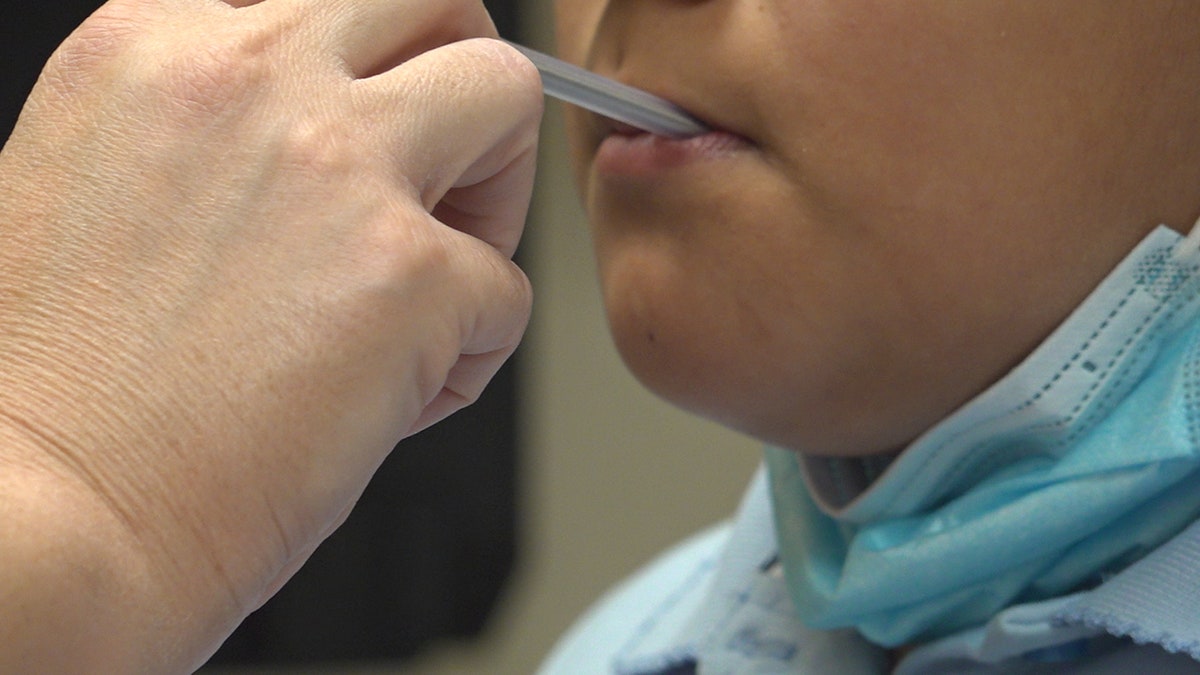School nurses stretched thin amid nationwide staff shortage
As COVID-19 cases continue to rise across the nation, school nurses are being stretched thin. Several districts say trying to hire more staff is proving difficult.
TUCSON, Ariz.-- – As COVID-19 cases continue to rise across the nation, school nurses are being stretched thin. Several districts say trying to hire more staff members is proving difficult.
The president of the National Association of School Nurses, Linda Mendonca, says the shortage has always been an issue, but the pandemic is making things worse.
SCHOOLS NATIONWIDE STRUGGLE TO FILL OPEN POSITIONS, HIRE SUBSTITUTE TEACHERS
"This is our third school year that we're dealing with this pandemic, and [nurses] are tired they've been working 24/7," she says.

Pandemic aside, the CDC recommends schools have one full-time nurse for every 750 students. At the moment it’s estimated that about a quarter of schools have no nurse at all (Stephanie Bennett/ Fox News).
Like many other professions over the last few months, schools are now seeing nurses retire early or change careers.
"We are definitely seeing the shortage," said Mendonca. "Our country as a whole, it is concerning that almost about half of our public schools don't have a full-time school nurse."
Some school districts are now forced to share nurses between campuses, while others are working overtime to deal with the additional workload that now comes with keeping our children safe.
LABOR SHORTAGES IN US: MOST, LEAST IMPACTED AREAS IN THE COUNTRY
Health services coordinator Sarah Rawdin is one of 10 registered nurses looking after 21 schools in the Sunnyside Unified School District in Tucson, Arizona. She tells Fox News that she visits around two to three schools per day on average. On busy days it can be up to six.
Pandemic aside, the CDC recommends schools have one full-time nurse for every 750 students. At the moment, it’s estimated that about a quarter of schools have no nurse at all.
"The work doesn't stop and so we just keep working," said Rawdin. "There's just so much extra work with COVID, it's not uncommon for me to see emails come through regarding COVID cases well into the evening and I know that my staff has stayed unfortunately they haven't gone home on time because of the workload, and just trying to get everything done and keep everybody safe."
School nurses play multiple roles, helping students with everything from minor cuts and bruises, to chronic conditions and working through mental health situations. With the pandemic they’re now tracking and testing children for COVID-19 too.

School nurses play multiple roles, helping students with everything from minor cuts and bruises, to chronic conditions and working through mental health situations. With the pandemic they’re now tracking and testing children for COVID-19 too (Stephanie Bennett/Fox News).
It can be very time consuming for school nurses as they must inform other students, parents, and staff, as well as the city, county, or state if a student gets a positive result.
"We are currently doing pool testing, which we do it once a week, with whatever students parents gave consent and nurses drop off the supplies," said Crystal Alvarez, lead nurse with the Nogales Unified School District. "The students swab themselves, and then that is sent to the lab, and if one of the PCR tests ends up positive, then we rescreen those students with a rapid test."
The Nogales Unified School District is utilizing outside help by working closely with community health leaders to offer telehealth visits with doctors and COVID-19 testing.
CLICK HERE TO GET THE FOX NEWS APP
"It has been busier than prior school years when there was no pandemic," said Alvarez. "Now with any mild cold or a sore throat or anything like that they have to be sent to the nurse's office."
She continued, "It's a little bit more work than before but it's better, and that's how we've been able to keep our students safe."






















